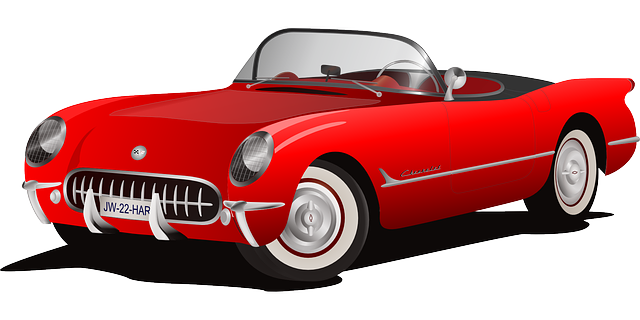The Vehicle Identification Number (VIN) is a 17-character code globally identifying vehicles, with critical roles in California DMV checks. VIN verifiers cross-reference this number against databases to reveal past ownership history, accident reports, and theft records, protecting consumers from fraud and maintaining market integrity. In California, mandatory DMV VIN checks verify vehicle history and condition, especially important given the state's high vehicle density. A reliable vin verifier leverages comprehensive data to ensure transparency, while facing challenges like inaccurate data input and damaged plates. Continuous training and advanced tools are essential for maintaining process integrity.
In California, understanding the intricacies of a Vehicle Identification Number (VIN) check is paramount for both car buyers and sellers. The Department of Motor Vehicles (DMV) relies on this unique 17-character code to verify vehicle history, ensuring the safety and legality of sales. This article serves as your comprehensive guide through the process, from grasping the significance of VINs to navigating potential challenges during verification using a reliable vin verifier.
- Understanding VIN (Vehicle Identification Number) and Its Role in California DMV Checks
- When and Why You Need a California DMV VIN Check
- Step-by-Step Guide to Conducting a Valid VIN Verification
- Common Challenges and How to Overcome Them During the VIN Checking Process
Understanding VIN (Vehicle Identification Number) and Its Role in California DMV Checks

The Vehicle Identification Number (VIN) is a crucial 17-character code that serves as a unique identifier for every vehicle manufactured worldwide. It plays a pivotal role in California Department of Motor Vehicles (DMV) checks, ensuring the authenticity and history of vehicles up for sale or transfer. A VIN verifier is a tool that cross-references this number against vast databases to provide insights into a car’s past, including ownership history, accident reports, and potential theft records.
This process is essential in California, where stringent regulations govern vehicle sales and transfers. By utilizing VIN verifiers, the DMV can verify that vehicles meeting for sale or registration comply with safety standards and have not been reported as stolen or damaged beyond repair. This measure helps protect consumers from fraud and ensures a safer, more transparent automotive market within the state.
When and Why You Need a California DMV VIN Check

In California, a DMV VIN check is essential for several reasons and often required in various scenarios. It serves as a critical verification process when purchasing or selling a vehicle, ensuring that both parties are aware of the vehicle’s history and condition. This step is particularly crucial given the vast number of vehicles on California’s roads, making it vital to maintain accurate records.
Additionally, a VIN (Vehicle Identification Number) verifier, such as those provided by the California DMV, plays a pivotal role in identifying potential issues or discrepancies. It helps detect stolen vehicles, check for outstanding liens or recalls, and verify the vehicle’s authenticity. This simple yet powerful tool is a game-changer when it comes to protecting consumers and ensuring the integrity of the automotive market in California.
Step-by-Step Guide to Conducting a Valid VIN Verification

Conducting a valid Vehicle Identification Number (VIN) verification is crucial for ensuring the authenticity and history of a vehicle. Here’s a step-by-step guide to help you navigate this process efficiently.
1. Obtain the VIN: Start by locating the VIN on the vehicle itself, typically found on a label on the driver’s side door frame or under the hood. You can also check the title or registration documents for the number. A reliable vin verifier can cross-reference this information to gather essential data.
2. Use an Online VIN Check Tool: Utilize trusted online platforms designed for VIN verification. These tools are equipped to query extensive databases, providing detailed reports that include vehicle history, accident records, and ownership details. Simply input the VIN into the checker, and within seconds, you’ll have access to critical insights that can help you make informed decisions about purchasing or insuring the vehicle.
Common Challenges and How to Overcome Them During the VIN Checking Process

The California Department of Motor Vehicles (DMV) Vehicle Identification Number (VIN) check process can be fraught with common challenges that often lead to delays or errors. One of the primary hurdles is ensuring accurate data input, as even minor typos or misreads by the vin verifier can significantly impact the outcome. To overcome this, it’s crucial to double-check each digit manually before inputting it into the system. Additionally, dealing with damaged or illegible VIN plates requires specialized tools and expertise to extract usable information, which can be a time-consuming process.
Another challenge lies in verifying the authenticity of the VIN itself. Skilled vin verifiers must be adept at identifying potential alterations or manipulations, which necessitates staying updated on the latest technology and methods for detecting forged or tampered VINs. Regular training and access to advanced verification tools are essential to maintain the integrity of the process. Moreover, dealing with rare or vintage vehicles can pose unique difficulties since their VIN formats might deviate from standard protocols, requiring a deeper understanding of historical vehicle identification systems.
In conclusion, understanding California DMV VIN check guidelines is essential for anyone looking to verify vehicle history. By following a comprehensive step-by-step guide and being aware of potential challenges, you can ensure a smooth and accurate process using a reliable vin verifier. This knowledge empowers individuals to make informed decisions when purchasing or inspecting vehicles in the state of California.



